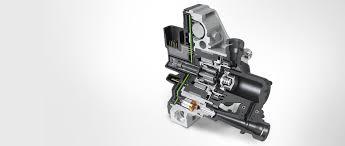The automotive industry's transition to smarter and more efficient transmission systems results in an increasingly indistinguishable boundary between manual and automatic controls. The clutch actuator enables this advancement by merging mechanical precision with electronic control to achieve smoother gear changes and lessen driver workload.
Automated manual transmissions (AMT) in city hatchbacks and performance vehicles with paddle shifters both rely on clutch actuators to perform the functions previously managed by a driver's left foot. The clutch actuator represents a critical component in modern vehicles but what exactly does it do and why is it increasingly important?
What Is a Clutch Actuator?
The clutch actuator functions as an automatic device which eliminates the necessity for manual input to operate the clutch. Clutch actuators serve as essential components within both semi-automatic and automated manual transmission vehicles. The vehicle’s transmission control unit (TCU) directs hydraulic or electric power to the clutch actuator which handles clutch engagement instead of the driver operating it manually.
The actuator is usually connected to:
The clutch master cylinder (in hydraulic systems)
The clutch release mechanism
Real-time control signals are provided to the TCU or ECU in transmission systems.
The actuator immediately disengages the clutch when the driver initiates a gear change through an automatic command or manual input via paddle or gear lever and then smoothly re-engages it after the gear shift.
Where Is It Used?
Clutch actuators are commonly found in:
Automated Manual Transmissions (AMTs)
Dual-Clutch Transmissions (DCTs)
Semi-Automatic Manual Gearboxes
Commercial vehicles with auto-clutch systems
These systems merge the precise control and fuel-saving benefits of manual transmissions with the user-friendly operation of automatic drive modes. The clutch actuator serves as the primary component that establishes this transmission balance.
Why It Matters: Performance, Efficiency, and Comfort
Both manufacturers and drivers experience multiple advantages when clutch actuators become part of the system.
1. Smoother Gear Changes
The system achieves precise shifting through automated clutch engagement. This system removes human errors such as delayed clutch releases or jerky starts which proves highly beneficial in stop-and-go city traffic.
2. Improved Fuel Efficiency
The precise timing of automated clutch operation with engine load and speed enables energy to be used more efficiently during gear shifts. The system achieves better fuel economy than standard manual driving methods.
3. Reduced Wear and Tear
The precise operation of the actuator prevents clutch slippage and mechanical strain which leads to longer clutch component lifespan and enhanced durability.
4. Driver Accessibility
Manual transmission vehicles equipped with clutch actuators enable drivers who either lack mobility or are inexperienced to enjoy enhanced accessibility while maintaining full control.
Clutch Actuator vs. Traditional Clutch Pedal
The operation of the clutch in a traditional manual transmission requires complete control from the driver. The system provides substantial control capabilities but demands expertise and concentrated effort from the driver. Transmission damage and premature wear could result from clutch riding or abrupt engagement mistakes.
The clutch actuator eliminates the need for manual control input. The clutch actuator interprets engine and gear selector signals to automatically control clutch operation. Most systems enable the clutch actuator to modify its performance based on driving situations such as low-speed driving or high-load conditions like towing.
Potential Issues and Maintenance Considerations
Clutch actuators minimize driver engagement yet remain susceptible to operational problems. Electromechanical components experience wear or failure which clutch actuators are also subject to over time. A failing clutch actuator typically presents symptoms such as jerky gear changes and delayed engagement during low-speed manoeuvres.
Jerky or delayed gear changes
Difficulty engaging gears from standstill
Warning lights related to transmission or clutch
Unusual noises during gear engagement
Early detection of potential issues is possible through regular diagnostic scans especially for systems where the Electronic Control Unit tracks actuator performance. A full replacement becomes unnecessary when recalibration or software updates serve to correct operational glitches.
The Future of Clutch Control
The clutch actuator will play an expanding role as transmission technology becomes more software-defined and adaptive. The latest systems integrate sensors which monitor temperature, engagement speed and wear to input information into predictive maintenance algorithms. Advanced dual-clutch systems use multiple actuators to achieve near-instantaneous gear changes while maintaining minimal power loss.
Actuation systems similar to those used in dual-clutch systems can be adapted to control gear changes in multi-speed electric vehicles which currently represent a niche but expanding market and these systems operate based on actuator control principles.
Conclusion: Smart Control Where It Counts
Although the clutch actuator remains hidden within a modern transmission system it performs an essential function. Automated clutch engagement enhances vehicle performance through precision and rapid response which combines manual driving enjoyment with automatic ease of use.
The automotive industry's focus on enhancing efficiency and electronic integration makes it essential for drivers, technicians, and enthusiasts to understand the operation of components including the clutch actuator.

